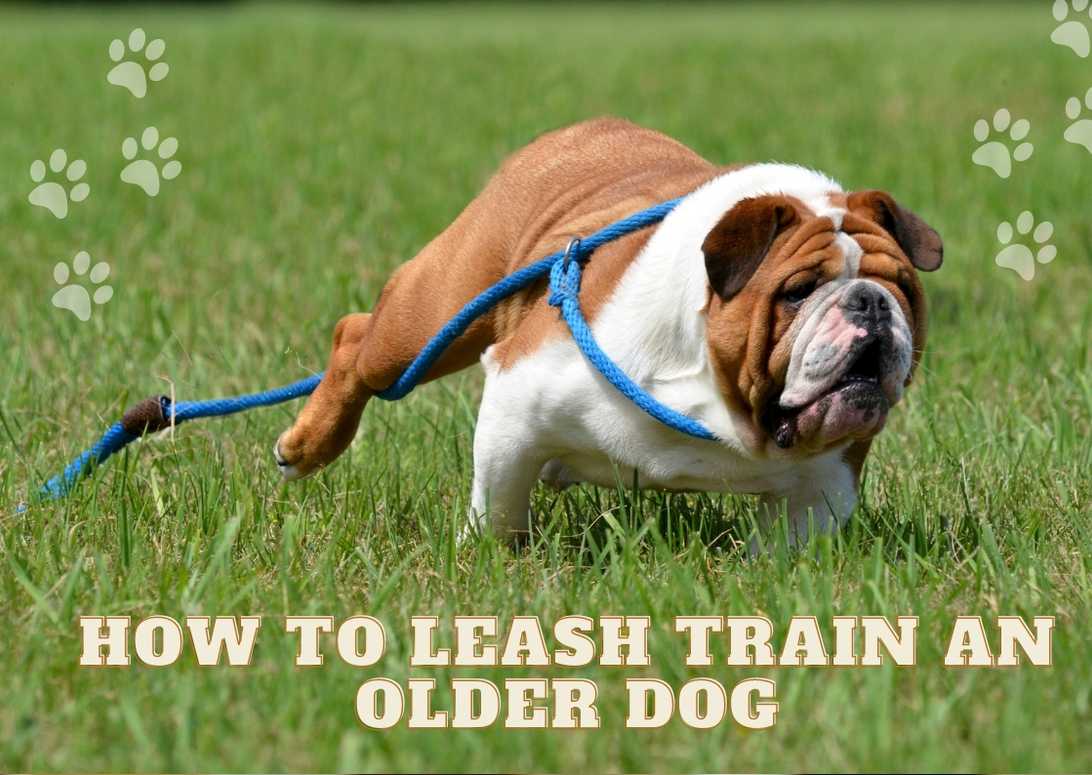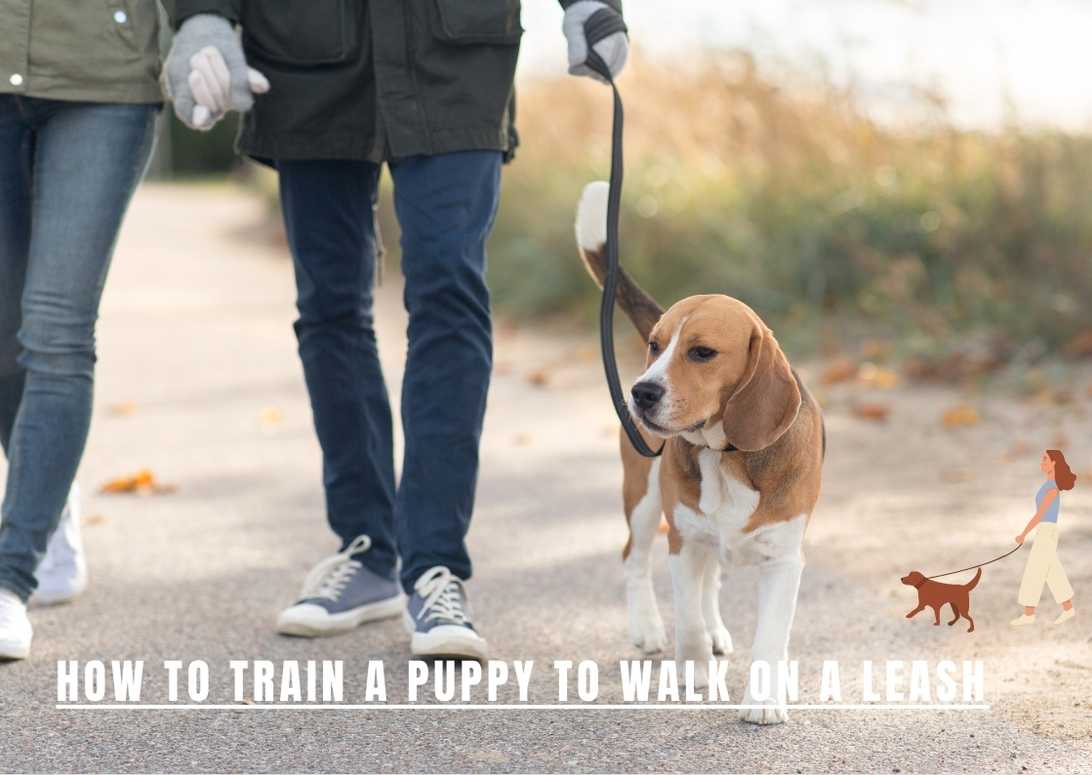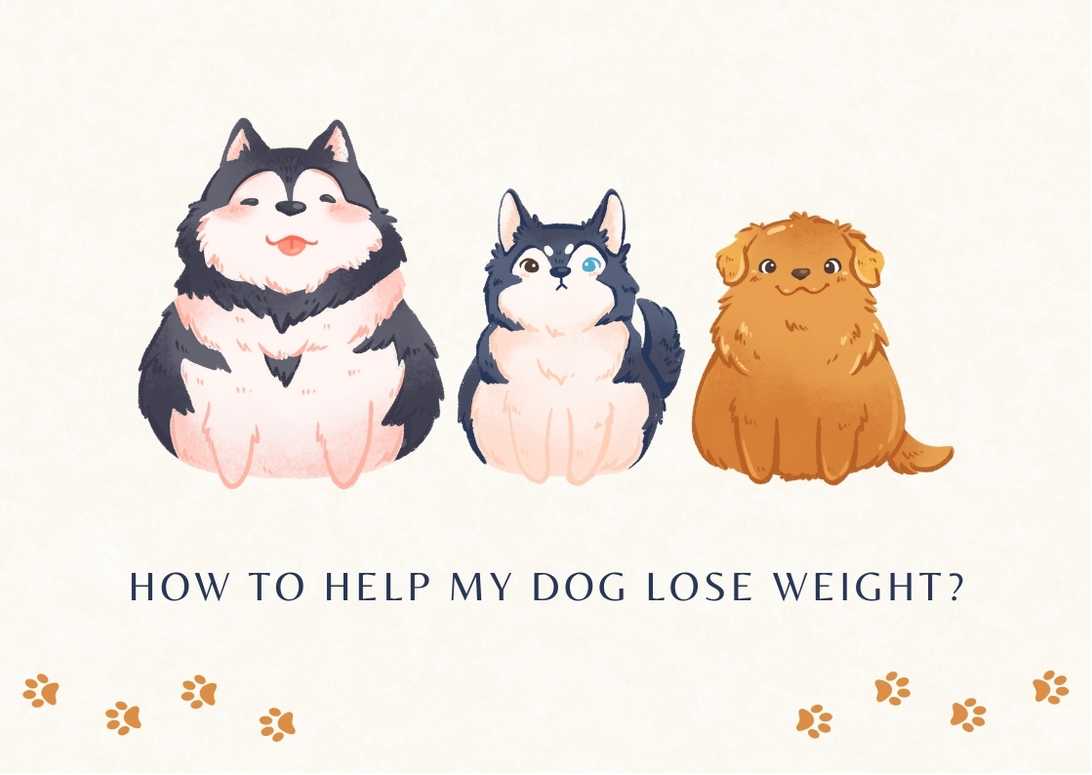How To Leash Train An Older Dog
Leash training an older dog may seem like a daunting task, but I assure you, it is absolutely achievable. As someone who has successfully trained my own older dog to walk on a leash, I understand the challenges that come with this process. However, with the right approach and techniques, you can turn those walks into enjoyable experiences for both you and your furry friend.
In this article, I will guide you through the steps of leash training an older dog. We will start by gathering the necessary materials and choosing the right leash to ensure comfort and safety.
Then, we will address any nervousness or excitement your dog may have while on a leash, using positive reinforcement rather than punishment-based techniques. By establishing good habits and practicing patience throughout the training process, you’ll soon find yourself enjoying peaceful walks alongside your well-behaved companion.
Additionally, we will touch upon important health factors to consider when leashing train an older dog. So let’s get started on this journey towards successful leash training!
Important Points
- Choose the right leash based on factors like length, material, handle design, and attachment options.
- Use positive reinforcement and desensitization exercises to train the dog.
- Gradually introduce distractions to help the dog stay focused.
- Consider the dog’s body language and adjust the training pace accordingly.
Getting Started
Now that I’ve gathered all the materials I need and eliminated any nerves about wearing a leash, it’s time to get started with leash training my older dog.
The first step is to focus on discouraging pulling by using positive reinforcement techniques. Whenever my dog walks beside me without pulling, I’ll reward him with treats or praise. This will help him understand that walking nicely on the leash is a desirable behavior.
Additionally, desensitization exercises can be helpful in getting my dog used to the feeling of wearing a leash. I can start by simply attaching the leash to his collar or harness and allowing him to walk around indoors for short periods of time. Gradually, I can increase the duration and incorporate outdoor walks.
Introducing distractions is another important aspect of leash training an older dog. Once my dog becomes comfortable with walking on a loose leash in familiar environments, I can gradually introduce distractions such as other dogs or people. By practicing in different settings with varying levels of distraction, my dog will learn to stay focused on me and not pull on the leash.
There are also various tools available that can aid in leash training an older dog. For example, using a front-clip harness can discourage pulling by redirecting the force from the chest rather than the neck. Another option is using a head halter which gives more control over your dog’s movements without putting pressure on their neck.
Choosing the right leash for my older dog is crucial for successful training. A standard six-foot nylon leash is usually recommended as it provides enough length for freedom of movement but still allows me to maintain control if needed. It’s important to avoid retractable leashes during this training phase as they may encourage pulling and make it difficult to enforce boundaries.
With these initial steps covered, let’s now move on to choosing the right kind of leash for effective training without causing discomfort or harm to our furry friends. There are several options to consider when selecting a leash for effective training without causing discomfort or harm to our furry friends.
One popular choice is a standard nylon or leather leash, which provides durability and control while still being comfortable for the dog. Another option is a martingale collar and leash combination, which gently tightens around the dog’s neck when they pull, discouraging the behavior without causing harm. Additionally, a front-clip harness can be an excellent choice for dogs that tend to pull, as it redirects their forward momentum and encourages them to walk by your side.
Overall, the key is to choose a leash that balances control and comfort, allowing you to effectively train your dog while keeping them safe and happy.
Choosing the Right Leash
To ensure a comfortable and effective training experience, you’ll want to select a leash that suits your furry friend’s needs. Did you know that there are over 15 different types of leashes available for dogs? When choosing the right leash for your older dog, consider factors such as leash length, material, handle design, and attachment options.
Different leash options include standard nylon leashes, retractable leashes, leather leashes, and chain leashes. The leash length should be appropriate for your dog’s size and walking style. For example, if your dog tends to pull or roam around during walks, a shorter leash may provide better control.
In addition to length, consider the material of the leash. Nylon leashes are durable and easy to clean, while leather leashes are sturdy but require more maintenance. The handle design should be comfortable for you to hold and grip securely. Some leashes come with padded handles or ergonomic designs for added comfort during long walks.
Lastly, check the attachment options on the leash. Most leashes have a standard clip attachment that can secure onto your dog’s collar or harness. However, some specialized leashes may have additional features like double clips or multiple D-rings for versatile usage.
By selecting the right leash for your older dog’s specific needs and preferences, you can ensure a positive training experience without causing discomfort or stress. Now let’s explore how to avoid punishment-based techniques when teaching your furry companion how to walk on a leash without pulling or misbehaving.
Avoiding Punishment-Based Techniques
When teaching your mature canine companion, it’s crucial to refrain from using punitive methods that may cause discomfort or distress. Instead, focus on positive reinforcement and gradual introduction to the leash. By rewarding good behavior and praising your dog when they walk calmly on the leash, you can build trust and create a positive association with leash training.
It’s important to understand your dog’s body language during this process and be responsive to their needs. If you notice signs of fear or stress, take a step back and proceed at a pace that makes them comfortable. This approach will not only make the training experience more enjoyable for your older dog but also strengthen the bond between you.
In order to address excitement associated with wearing a leash, it’s essential to transition into the next section smoothly. By gradually increasing the duration of time spent wearing the leash and incorporating short walks in familiar environments, you can help desensitize your dog to this new experience.
Additionally, engaging in calming activities such as gentle play or providing chew toys can redirect their energy and reduce excitement levels before starting a walk. Understanding that each dog has different needs and adjusting your training techniques accordingly will lead to a successful leash training journey for both you and your furry friend.
Now let’s discuss how we can effectively address this excitement and ensure a smooth transition into walking on a loose leash without causing any further stress or discomfort for our older dogs.
Addressing Excitement
In order to effectively manage your mature canine companion’s excitement during leash training, it’s essential to gradually introduce and acclimate them to the sensation of wearing a leash. This can be done by first gathering the necessary materials, such as a comfortable body harness or a training lead that provides more control.
By using these tools, you can eliminate any nerves or discomfort your dog may have when initially wearing the leash.
To address their excitement and manage their energy during training sessions, it’s important to redirect their focus. Engage in activities that help them burn off excess energy before starting the training session, such as playing fetch or going for a short walk. This will help them be more calm and focused when it’s time for leash training.
Additionally, use positive reinforcement techniques and gentle corrections to establish good habits. Reward and praise your dog whenever they exhibit desired behaviors, such as walking calmly beside you without pulling on the leash. Consistency is key in establishing these habits.
By addressing your older dog’s excitement through managing their energy levels and redirecting their focus, you can create a more successful leash training experience. Once this step has been mastered, you can move on to establishing good habits by using reward and praise consistently throughout the training process.
Establishing Good Habits
By consistently rewarding and praising desired behaviors, your mature canine companion can develop positive habits during their training sessions. Establishing good habits is essential when leash training an older dog. It’s important to make the experience enjoyable for them by eliminating any nerves they may have.
One effective way to do this is by using rewards and praise as motivation. Whenever your dog exhibits the desired behavior of walking calmly on a loose leash, be sure to give them a treat or verbal praise. This positive reinforcement will help them associate the act of walking on a leash with something pleasant and rewarding.
In addition to rewards and praise, there are several leash training techniques that can be helpful in establishing good habits. One technique is to start walking as you normally would and hold the leash firmly, allowing your dog to use up the loose leash. By doing so, you are giving them the freedom to explore while still maintaining control.
Another technique is to use a command like ‘heel’ in a loud and firm voice whenever your dog pulls on the leash. This teaches them that pulling will not result in moving forward, but rather in stopping or changing direction.
By incorporating these leash training tips into your sessions, you can set your older dog up for success and establish positive habits during their walks. However, it’s important to remember that patience is key when working with an older dog who may have ingrained behaviors or resistance towards being leashed trained.
Using Patience
Be patient and understand that it may take time for your furry companion to adjust to walking on a leash at their own pace, but the journey will be worth it.
Teaching boundaries is an important aspect of leash training for older dogs. They need to learn what is acceptable behavior while on a leash and what is not. By setting clear boundaries and consistently reinforcing them, you can help your dog understand their limitations and ensure a safe and enjoyable walking experience.
Building trust is another crucial element in leash training. Older dogs may have had negative experiences or may simply be unfamiliar with the concept of being leashed. Take the time to build a strong bond with your dog through positive reinforcement techniques such as treats, praise, and gentle petting. This will create trust between you and your furry friend, making them more receptive to learning how to walk on a leash.
Remember that progress will be gradual, so don’t rush the process. Start by introducing the leash indoors or in a familiar outdoor space where there are minimal distractions. Allow your dog to explore and get comfortable with the feeling of being on a leash before moving on to more challenging environments.
Consistency in training is key when teaching an older dog how to walk on a leash. Make sure everyone in the household follows the same rules and uses the same commands during walks. This will prevent confusion for your furry companion and help reinforce what they have learned.
As you continue with patience, teaching boundaries, building trust, gradual progress, positive reinforcement, and consistency in training, remember to also consider health factors that may affect your older dog’s ability to walk comfortably on a leash without any issues or discomfort.
Considering Health Factors
When considering health factors, it’s important to take into account your furry companion’s physical condition and any potential limitations they may have.
Senior friendly leash options are available that can provide added comfort and support for older dogs. These leashes often have padded handles or harnesses that distribute pressure evenly, reducing strain on the neck and joints.
Additionally, it’s crucial to be aware of any health conditions that may affect leash training. For example, if your dog has arthritis or joint pain, you may need to modify your training techniques to accommodate their discomfort. This could mean using shorter walks or incorporating gentle exercises specifically designed for older dogs.
Regular breaks during leash training are also essential for older dogs. Just like humans, they may tire more easily and require frequent rest periods. Take the time to allow them to catch their breath and recover before continuing with the training session. It’s important not to push them too hard or overwhelm them physically.
Remember that patience is key when working with an older dog, as it may take longer for them to adapt to leash training compared to a younger pup. By considering your dog’s health factors and making necessary modifications, you can ensure a safe and comfortable experience while teaching them how to walk on a leash confidently.
Frequently Asked Questions
Can I use a shock collar or prong collar to leash train my older dog?
I would not recommend using a shock collar or prong collar to leash train an older dog. The controversy surrounding these tools and their potential harm outweigh any benefits. Positive reinforcement methods and alternative leash training tools are more effective in overcoming common challenges in leash training.
How long does it typically take to leash train an older dog?
It typically takes time and patience to leash train an older dog. Leash training techniques for stubborn older dogs include using positive reinforcement, such as rewards and praise, and avoiding punishment-based methods. Common challenges faced while leash training older dogs include pulling and resistance. Effective tips to speed up leash training for older dogs involve consistency, short sessions, and gradually increasing distance. Building trust and cooperation during leash training can be achieved through bonding activities and positive experiences on walks. For older dogs with fear or anxiety issues, it’s important to go at their pace, provide a safe environment, and consider professional assistance if needed.
What should I do if my older dog continues to pull on the leash?
If my older dog continues to pull on the leash, I should consider alternative leash training methods such as using a front-clip harness or head collar. Seeking professional help for leash training can also be beneficial. It’s important to understand the underlying reasons for leash pulling and incorporate positive reinforcement techniques. Patience and consistency are key when leash training an older dog.
Are there any specific breeds that may require different leash training techniques?
Different breeds may have different temperaments and energy levels, which can impact their leash training. Factors to consider include size, strength, and exercise needs. Tips for leash training a stubborn older dog include using positive reinforcement, being patient, and avoiding punishment-based techniques. Common mistakes to avoid are pulling on the leash or getting frustrated. Making leash training a positive experience includes using rewards and praise, gradually increasing duration and distance, and ensuring your dog is comfortable with the equipment used.
Can I use treats to reward my older dog during leash training?
Yes, using treats can be a great way to reward and motivate an older dog during leash training. Positive reinforcement helps them associate the leash with something positive. However, it’s important to also consider alternative rewards and maintain consistency while managing distractions.
Conclusion
In conclusion, leash training an older dog may require some extra effort and patience, but the rewards are well worth it. By following the right approach and techniques outlined in this article, you can successfully teach your furry companion to walk calmly on a leash.
Remember to gather the necessary materials and choose the right leash for your dog’s size and needs. Avoid punishment-based techniques that can harm your bond with them.
Furthermore, addressing any nervousness or excitement your dog may have is crucial in ensuring a smooth training process. Establishing good habits through positive reinforcement and rewards will also help reinforce desired behavior.
Lastly, don’t forget to be patient throughout the training journey and take into consideration any health factors that might affect your dog’s ability to learn. With time and dedication, you can enjoy peaceful walks together with your well-trained older dog.








